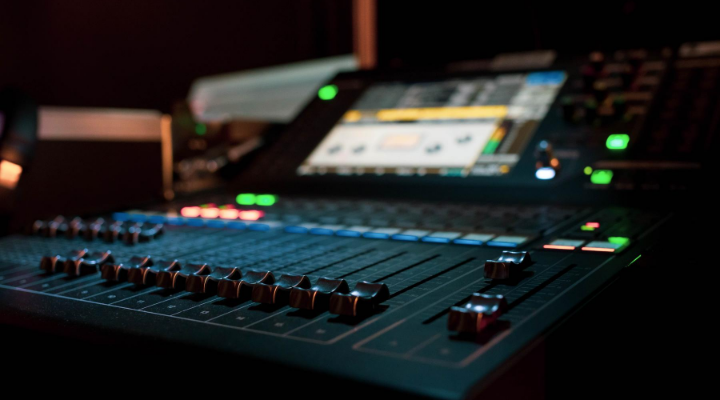Virtual Events: 3 steps to Engage your Audience
Even the most experienced event organizers may face difficulties in hosting a virtual event and dealing with one of the main challenges - delivering...
.png)
In January we wrote a blogpost where we went through all the things that are important for the virtual event organizer to remember. This blogpost is going to dive into the filming techniques of virtual events. Virtual event can be either a light webinar held for example in Zoom or a large production held in a big studio, organized with multiple cameras. Virtual event can also be held in 3D environment where participants move their avatars around and visit different places this way. In this post we are going to focus on more general and traditional virtual events.
There are some questions that must be considered when you are organizing a virtual event: what are you organizing, who are you organizing it for, what resources do you have and who are you organizing the event with? Remember to also create a budget because virtual events can cost a lot. All depends on the implementation, the duration of the event and whether you want a simple event in Zoom or a slightly larger entirety which is filmed for example in a professional studio.
.png?width=720&name=BLOGIN%20KANSIKUVA_A%CC%88LA%CC%88%20POISTA%20(32).png)
Zoom, Microsoft Teams and Google Meet are great tools for a light implementation for events, seminars or meetings. We at Liveto recommend using Zoom because with it you can take the meeting to Vimeo, YouTube or Facebook. This way you can create a live stream which is easy to follow from the audience point of view. We also wrote a separate blogpost about Zoom’s Live – features.
When you use one of the platforms mentioned earlier, remember to go through all of the functions with your speaker(s) before the event. Although these platforms are quite simple to use, there is always a possibility that the performer has never used these tools before. Rehearsal should be held not later than day before of the event so that you can look through all the functions with speakers/participants. Remember to make sure that the performers connect their computers to a wired broadband or at least to strong wifi. We don’t recommend using wifi shared from a phone.
If the performers talk and use camera, they should consider using external microphone and camera. Clear picture and voice make the viewing experience remarkably better as well as make the event look like it has better quality. Speakers should light their face clearly and try to sit so that they don’t have a window behind them. Background should be considered carefully in order to avoid boring backgrounds. For example, it can look very boring if the performers have just a white wall behind them.
Presentations should be shown using the entire screen and not in a way that in the background of the presentation people can see the performer’s desktop. Visualization, audio quality and the content are most important factors when thinking about successful viewing experience. If you want your event to be more than just content in Zoom, you should consider taking a remote director along. With a director the event can still be light, but the stream can be made very professional-looking with for example different graphics, videos or music.
Checklist for a light implementation:
The aim of the virtual event live stream is usually to make it visually pretentious and for this goal there are multiple solutions. We at Liveto recommend that you put your effort on visualization. Especially, if the event is not free. With a studio that is ready to be used, you can tailor the virtual event into a pretentious ensemble just the way you want it. Several virtual events are completely comparable to high-quality tv broadcasts. When organizing this level of event, you should consider the budget and what you want to achieve. How many different angles do you want, how many microphones you need and is there going to be a led wall, visuals, or colorful lights. Also think if you want the broadcast to have some graphics or music for example? All of these examples make a huge impact also to the price of the filming production.
You should get started with a production that has at least two cameras because the visualization of the event is already improved when the angle can be shifted in the live broadcast. In big productions you usually have a technical partner to help with filming, so you don’t have to do everything by yourself. If you rent a studio, remember to make sure that there is enough space, good internet connection, unobstructed entry, reasonable lighting and some furniture’s that you can use to decorate the room. Filming equipment’s take a lot of space so ask your filming partner how much space they need.
Checklist for a big implementation:
Learn more about our solutions for virtual events.
.jpg)
Even the most experienced event organizers may face difficulties in hosting a virtual event and dealing with one of the main challenges - delivering...

While some industries such as restaurants and retail stores slowly return to regular life, the future of the event industry remains uncertain. More...
-Dec-15-2021-09-45-17-39-AM.png)
Without a doubt, hybrid event form is on the rise. Hybrid events are the combination of virtual and in-person experiences. Due to restrictions in the...